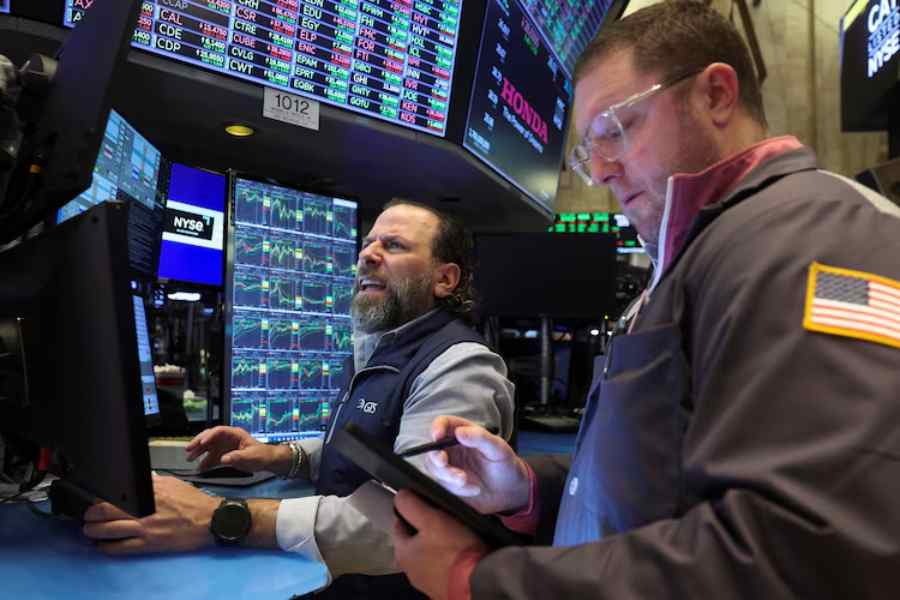Global financial markets posted modest gains Tuesday as investors responded to mixed signals from Washington on tariff policy. While uncertainty remains around President Donald Trump’s “reciprocal” trade strategy, markets welcomed recent comments suggesting potential relief for some industries.
The Trump administration announced on Friday that certain consumer electronics would be exempt from upcoming tariffs. This clarification helped power a surge in global equities on Monday. Trump further fueled investor optimism by hinting on Monday that he might ease auto tariffs, saying he wanted to “help some of the car companies” following the imposition of a 25% duty.
This change in tone marked a rare softening in the administration’s hardline trade stance, which has rattled global markets for months.
On Wall Street, futures indicated a cautiously positive start. Dow futures were up around 0.12% in early trading Tuesday, following a 0.7% rise in the Dow Jones Industrial Average on Monday. Nasdaq futures gained 0.34%, and S&P 500 futures rose 0.23%, signaling restrained but hopeful sentiment among investors.
European markets mirrored this mild enthusiasm, buoyed by a new pause in tariff retaliation. European Commission President Ursula von der Leyen’s 90-day delay on counter-tariffs against the U.S. took effect Tuesday, easing pressure on EU-U.S. trade tensions.
Germany’s DAX index gained 1.21% by midday, and Britain’s FTSE 100 was up 0.90%. Both markets benefited from reduced fears of immediate economic fallout and a renewed hope that diplomacy could still take precedence over protectionism.
In Asia, major indices also posted gains. South Korea’s KOSPI climbed 0.88%, while Tokyo’s Nikkei 225 advanced 0.84%. These gains mark a continuation of Monday’s regional rebound, driven in part by optimism that U.S. tariff policy could be entering a more flexible phase.
Still, the sentiment was more subdued in China. The Shanghai Composite rose just 0.15%, and Hong Kong’s Hang Seng index moved up 0.23%. With Trump’s tariffs still firmly in place on Chinese goods, investors there remain cautious.
Despite the general upward trend, analysts warned that markets are still highly sensitive to policy shifts from the White House.
“There’s clearly relief right now,” said market analyst Priya Narang. “But that could evaporate quickly if the administration reverses course or expands the tariffs again.”
Sectors most impacted by tariff fears—technology and automotive—led the gains. With exemptions announced for consumer electronics, tech stocks saw a rebound after weeks of volatility. Meanwhile, Trump’s remarks about helping carmakers gave a boost to both U.S. and European auto shares.
The Trump administration has a history of abrupt policy reversals, so while markets are reacting positively for now, investors remain vigilant. Financial analysts point to this period as a fragile truce, not a resolution.
This week’s market performance also reflects a broader strategic posture. Investors appear to be holding positions while waiting for more detailed policy moves or trade talks. The temporary suspension of European countermeasures creates a window for potential progress, but the uncertainty surrounding long-term policy continues to cloud the outlook.
Economic data from the U.S. expected later this week, including consumer spending and inflation reports, will likely influence whether this cautious optimism holds. Any signs that tariffs are dragging on growth could quickly reverse gains.
In the meantime, global traders remain on edge, parsing every word from Washington and Brussels for insight into the next chapter of the global trade saga.
For now, markets have taken a collective breath. Whether it’s a pause before a deeper rally—or the calm before another tariff storm—remains to be seen.


